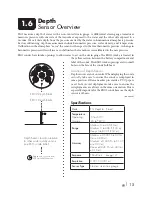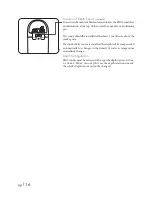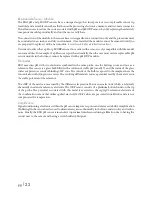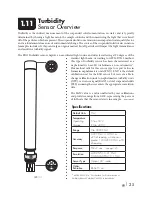
pg
|
22
Replaceable Sensor Module
The EXO pH and pH/ORP sensors have a unique design that incorporates a user-replaceable sensor tip
(module) and a reusable sensor base that houses the processing electronics, memory, and wet-mate connector.
This allows users to reduce the costs associated with pH and pH/ORP sensors by only replacing the relatively
inexpensive module periodically and not the more costly base.
The connection of the module to the sensor base is designed for one connection only and the procedure must
be conducted in an indoor and dry environment. Once installed the module cannot be removed until you
are prepared to replace it with a new module.
See section 6.14 for detailed instructions.
Users must order either a pH or pH/ORP sensor. Once ordered the sensor is
only
compatible with like-model
sensor modules. For example, if a pH sensor is purchased initially, then the user must order a replaceable pH
sensor module in the future; it cannot be replaced with a pH/ORP module.
Electrodes
EXO measures pH with two electrodes combined in the same probe: one for hydrogen ions and one as a
reference. The sensor is a glass bulb filled with a solution of stable pH (usually 7) and the inside of the glass
surface experiences constant binding of H+ ions. The outside of the bulb is exposed to the sample, where the
concentration of hydrogen ions varies. The resulting differential creates a potential read by the meter versus
the stable potential of the reference.
The ORP of the media is measured by the difference in potential between an electrode which is relatively
chemically inert and a reference electrode. The ORP sensor consists of a platinum button found on the tip
of the probe. The potential associated with this metal is read versus the Ag/AgCl reference electrode of
the combination sensor that utilizes gelled electrolyte. ORP values are presented in millivolts and are not
compensated for temperature.
Amplification
Signal conditioning electronics within the pH sensor improve response and increase stability. Amplification
(buffering) in the sensor head is used to eliminate any issue of humidity in the front-end circuitry and reduce
noise. Finally, the EXO pH sensor is insensitive to proximal interference during calibration due to having the
circuit next to the sensor and having a well-shielded pH signal.
















































